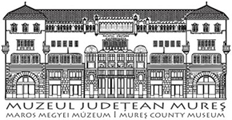Marisia - Maros Megyei Múzeum Évkönyve 23-24. (1994)
II. Istorie
67 TÄRGU - MURE? SUB STÄPÄNIREA HABSBURGICÄ 279 ASPECTS LOOKING THE HYSTORIC EVOLUTION OF TOWN TÁRGU-MURE? UP TO 1848 III. Tärgu - Mure? under the habsburgic domination up to 1848 (Summary) At the begining of the 18 th century the town evolution of Tärgu - Mures become more upward, without spectacular forms, being more slowly, but steadfaster. The town territory overtake in the year 1750 to about 170 hectare, constituting the builded zone; in the year 1800 to 220 ha and to the middle of the 19_th century to 235 ha, in which 211 ha the builded zone. In the nearly 150 years as represent the analysed period, the town appearance become other. A benefic influence it has the baroque style, introduced and supported in Transylvania of towards the new Austrian mastery, There are achieved important religious edifices inter alia the Jesuith church and Minorits church and miscellaneous building of public interest like Teleki Library, the new prefecture, the boardingschool Lutheran college or Roman - Catholic school. The town aspect of locality which is yet defined of noble house, or the well - to - do townsman, which carring the stamps of the baroque style, some with certoin artistic value. Among the more successful we mention the Toldalagi House, the Kendeffi House, the Teleki Domokos House, or the Haller House. The important transformations it knowing the mediaeval citadel of fown. One after the other the houses from citadel are demolished, in their place has builded garrison, while the bastions are altered after the new needs. A precious addition in the cognition of the town evolution it presents the town landscapes, more of the veridically authenticity. The number of town inhabitants it's in a continuous growing from about 3300 in 1709, to 8520 in 1846.
